Corporal Patrick Salazar
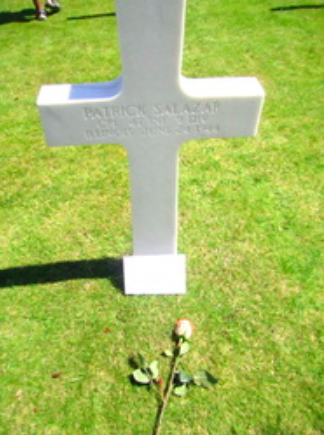
- Unit: Plot C, Row 24, Grave 11
- Service Number: 36651523
- Date of Birth: March 17, 1924
- Entered the Military: July 31, 1942
- Date of Death: June 24, 1944
- Hometown: Chicago, Illinois
- Place of Death: Cherbourg, France
- Award(s): Purple Heart
- Cemetery: Plot C, Row 24, Grave 11. Normandy American Cemetery, Colleville-sur-Mer, France
Mentored by Ms. Kristen Machczynski
2010-2011
Early Life
Born on March 17, 1924, in La Grange, Texas, Patrick Salavor moved with his father Walter to Chicago, Illinois.
When he completed his draft card on June 26, 1942, he was a student living with his father at 1110 South Winchester Avenue, in the West Englewood neighborhood of Chicago.
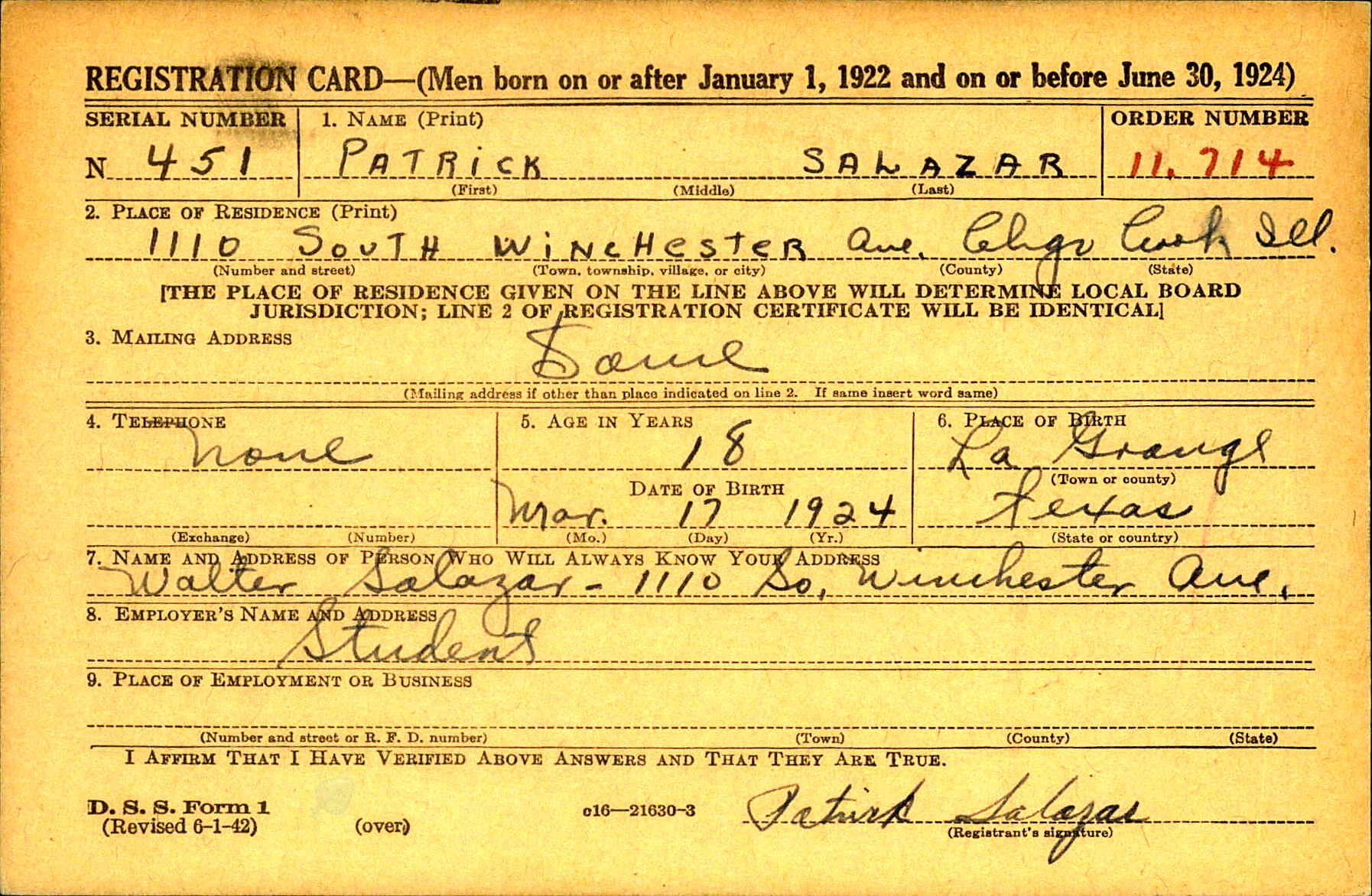
Homefront
What was the War News Around Town?
In 1944, everyone was focused on our soldiers overseas. Local newspapers, like The Chicago Defender and the Chicago Daily Tribune, kept Chicagoans up informed on a daily basis. Headlines such as, “Chicagoans Battling in France” and “We’re Giving Nazis Hell” kept everyone up to date. The Chicago Defender, the city’s and one of the nation’s African-American publications, published stories about the black soldiers that were out there fighting. One title read, “Negro Troops Move Up To Norman Front Line.”
The Chicago Daily Tribune featured articles centered on major issues of the day. Their articles discussed what was going on in Cherbourg, with an emphasis on the white soldiers’ actions overseas. They even shared maps and strategies. These newspapers published an article with a picture of the Cherbourg Peninsula, showing key points like Nazi main defense lines, where the Fourth Division “bypassed Monte Bourg and pushed toward Valognes, territory in which the allies held, an area which was heavily shelled by Germans and where the British fought their way into the Northern part of town.”
Homefront Industrial Production
Due to the need for vehicles and other equipment, the war began an expansion of employment and industrial production. A Chicago Daily Tribune article printed June 7, 1944 a subtitle read, “Area Leads in Weapon Output, says U.S.” The article read, ” Gen. Carroll said Chicago plants in conjunction with the army have made “the greatest engineering and production effort in history” and have provided “the staggering total of 450,000 separate items.” Chicago obviously played an integral role in the war efforts, specifically with retrofitting production lines and readying war items to ship to our boys overseas. However, as much as the country needed workers to build such important items for the war effort, those jobs were not as plentiful as many once thought.
Racial Equality
Chicago was not a place of peace for African Americans. Many areas were highly segregated and finding work was nearly impossible. The Chicago Defender and the Chicago Tribune published headlines such as:”Bilbo Fights Racial Equality on D-Day,” ” The Tribune on the Race Question,” “The Tribune Wrong Again,” and “Are You Light? Here’s a Job.”
Additionally, this fight for equality extended far past Chicago. In a 1942 letter to The Pittsburgh Courier, James G. Thompson called for a Double V Campaign to achieve two victories: over the Axis powers in World War II and over racial prejudice in the United States. African Americans found a double standard in that they were allowed to fight in combat to protect our nation, but back at home it was nearly impossible for the whites and blacks to engage in a civil manner when in the same room. While this campaign brought some change among the races at the time, it illustrated that need for change, helping to pave the way for the civil rights movement that built momentum in the mid-1950s and early 1960s.
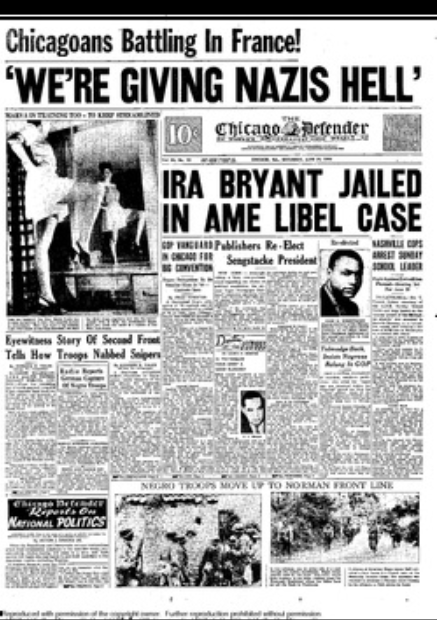
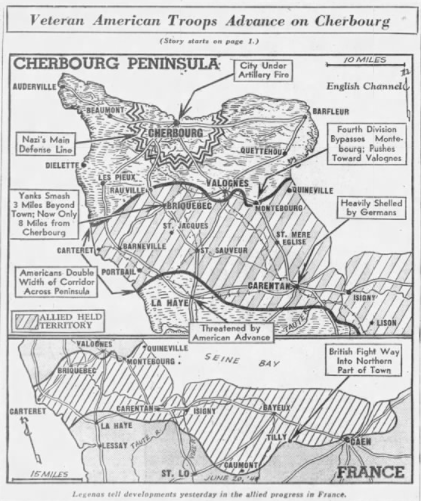
Military Experience
Patrick Salazar entered the United States Army, by way of Illinois, in August 1942. By June 1944, he was a corporal in the 9th Infantry Division, 47th Infantry Regiment. In the U..S Army, a corporal is a junior, non-commissioned officer and may direct the activities of other soldiers.
“The Raiders”
Salazar was part of a regiment nicknamed “The Raiders.” The Raiders served with distinction in World War I and served as an occupation force in Austria at the war’s end was deactivated in 1921. The 1940 regiment was reactivated as part of the 9th Infantry Division and participated in intense training. They served in North Africa and Sicily.
Salazar was part of Company I, a rifle company, serving as an assistant squad leader in charge of three other men. He was a leader in his field; in the case that his squad leader was injured or killed in action, Salazar would have been called upon to step up and lead in his superior’s place. This type of leadership embodies not only Salazar’s contributions to the war and his battle brothers, but the leadership the army built into its swiftly growing collection of forces.
Fierce Battles of the 9th Division
As a member of the 9th Division, 47th Infantry Regiment, 3rd Battalion, Company I, Corporal Patrick Salazar and his fellow soldiers landed at Utah Beach on D-Day plus 4, or June 10, 1944. Their job was to take control of the Cotentin Peninsula, and eventually, the deep water port at Cherbourg.
Fighting to Avoid Capture at Cherbourg
Salazar and his men were set to capture Cherbourg along with the 4th and 79th Infantry Divisions. Their job was to establish a firm bridgehead on the continent of Europe and thus secure a base for future operations inland. The battle started on June 19, and June 27 the city was finally captured. Salazar was killed in this fighting on June 24.
As a direct result of Salazar’s and others’ heroic actions in combat and the loss of their lives, the 3rd Infantry Battalion was issued a citation from Colonel John G. Van Houten, Chief of Staff, by order of Major General Craig. While this citation did not bring these brave men back, it does illustrate how great their sacrifices were and what those sacrifices meant to the war at large.
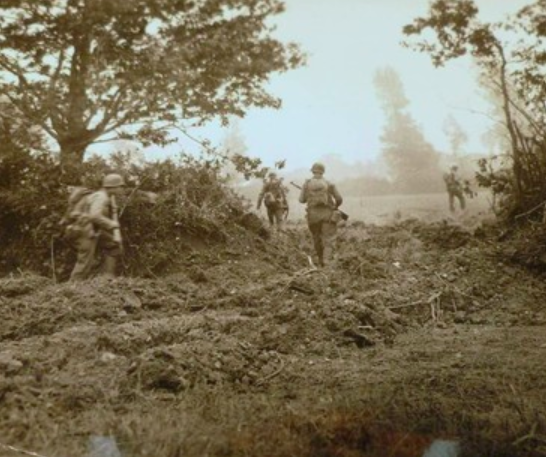
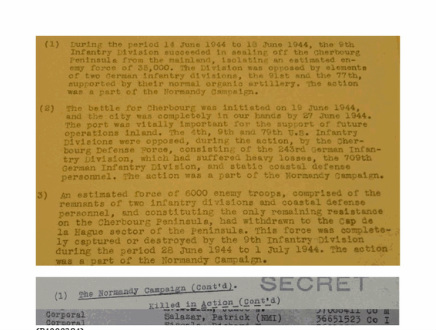
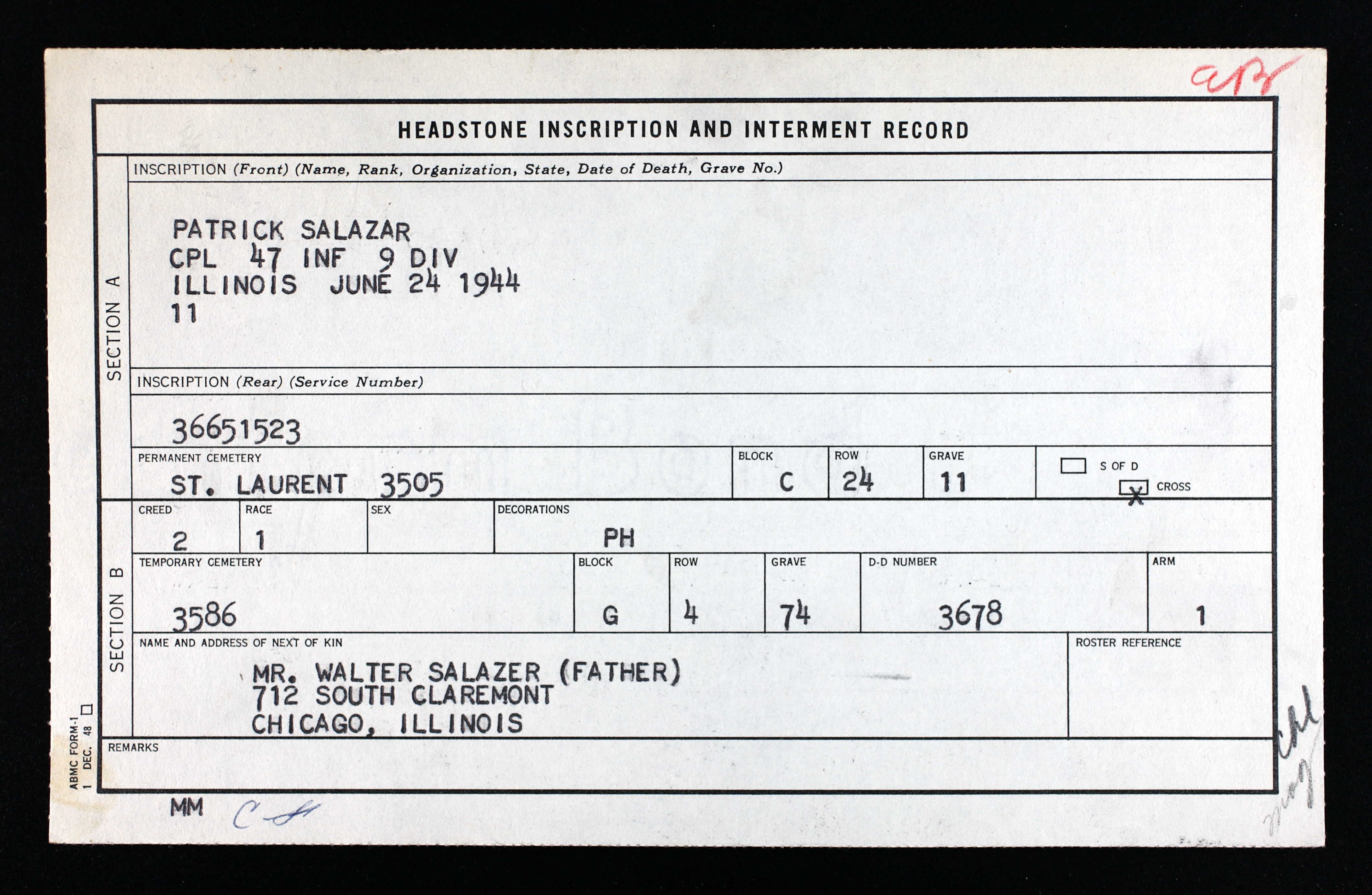
Eulogy
Corporal Patrick Salazar is buried at Normandy American Cemetery in Colleville-sur-Mer, France.
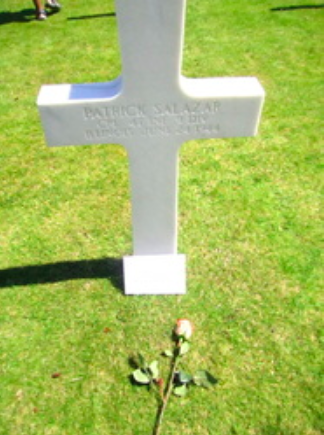
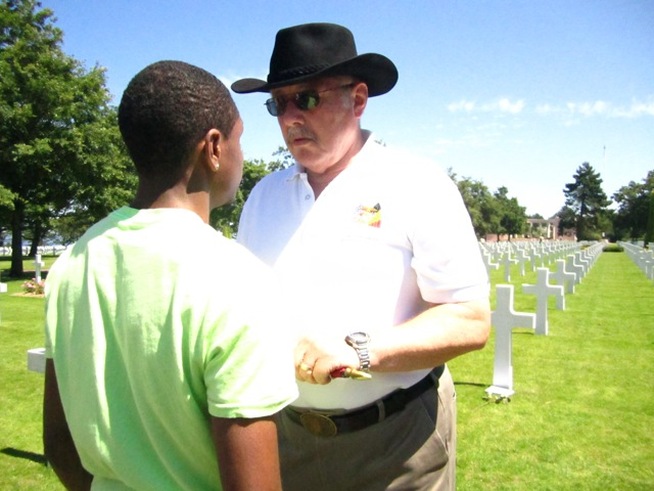
Reflection
Stepping foot upon the soil of the American Cemetery has to be one of my most cherished moments from this journey. Words cannot explain the numerous emotions that flooded my body. As I was hiking those stairs to one of the most beautiful places I have ever seen, I was thinking to myself about how much of an emotional experience that it was going to be for my peers and me. Each of us received our flags as we stepped to our chosen soldiers’ grave sites. We finally stepped foot in Normandy American Cemetery. Can you imagine walking on the soil that holds thousands of men who fought for your freedom? Honestly, it is nerve-racking. We began to follow a staff member from the cemetery who led us to each of our soldiers’ graves.
“Salazar!” My heart instantly skipped a beat and I responded with a quick, “yes.” “Follow me please,” he said. As I walked toward Salazar’s tombstone I swear it seemed as if everything around me stopped. My heart raced as I thought to myself, “I can’t do this,” but then I looked to my left I saw my teacher, Mrs. Mac, wiping the tears from her face. Seeing her cry really encouraged me to hold my emotions back for a bit, at least until I started reading my eulogy. Before I started reading, I took a knee and placed my two flags in the ground next Salazar’s grave, both at a respectable height. I stood up and Mrs. Mac handed me her iPad, on which I had written my eulogy. As I began reading, I immediately began trembling and my voice got a little raspy. I held back the tears and I finished my speech, stepping away from the grave marker. He returned my flags to me and placed them in my hands as if I should never let them go. He told me how honored he was to have a young man as myself to put forth the effort I did to find out more about Salazar’s life.

